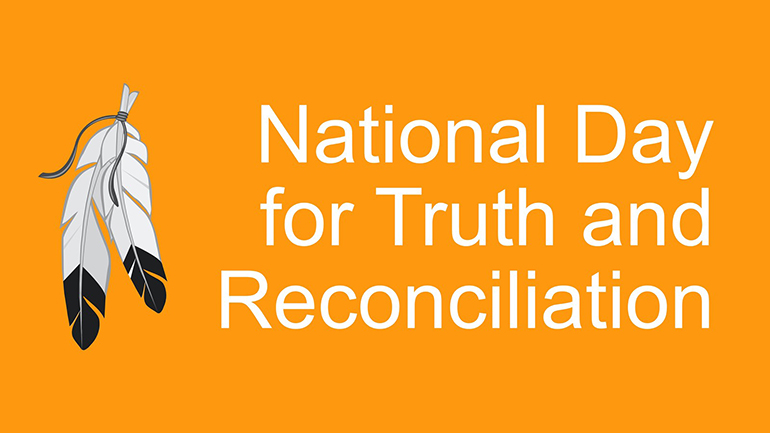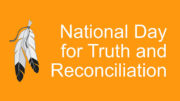by Kinnukana, Local Journalism Initiative Reporter
(ANNews) – On June 3, 2021, Bill C-5 of the Statutes of Canada received royal assent to add a new holiday, National Day for Truth and Reconciliation, which is observed on September 30th each year. According to the Merriam-Webster Dictionary, a holiday can also be referred to as a “Holy Day: a day on which one is exempt from work specifically: a day marked by a general suspension of work in commemoration of an event.”
According to Bill C-5, the purpose of the Bill is to respond to the Truth and Reconciliation Commission of Canada’s call to action number 80 by creating a holiday called The National Day for Truth and Reconciliation, which seeks to honour First Nations, Inuit and Métis Survivors and their families and communities and to ensure that public commemoration of their history and the legacy of residential schools remains a vital component of the reconciliation process.
Some people question why a ‘holy day’ was created and they don’t understand why it is necessary to take the time to remember this long-lasting, traumatic event. Residential schools tragically impacted Indigenous families in Canada, intergenerationally, for over a hundred years. Here is a factual timeline between 1831 and 1996 when the first residential school was established until the last one was closed:
- 1831 – The first residential school, The Mohawk Residential School, was established in Brantford, Ontario.
- 1847 – Egerton Ryerson, Ontario Chief Superintendent of Schools, advocates for Indigenous children to be educated separately from white children.
- 1876 – under Prime Minister Alexander Mackenzie, the ‘Indian Act’ becomes law, giving the Canadian government the exclusive right to create legislation regarding status First Nations people in Canada.
- 1879 – Nicholas Flood Davin’s report, ‘Industrial Schools for Indians and Half-Breeds,’ advises the federal government to create residential schools for all First Nations, Metis, and Inuit children.
- 1883 – the federal residential school system is created, funded, and operated by the Government of Canada, and the Roman Catholic, Anglican, Methodist, Presbyterian, and United Churches across Canada.
- 1907 – Public Health Physician Dr. Peter Henderson Bryce reports on the dire living conditions at 35 residential schools but he was ignored and released from his public role.
- 1920 – residential school becomes compulsory for all Indigenous adolescent children.
- 1922 – Dr. Bryce publishes his book The Story of a National Crime: An Appeal for Justice for the Indians of Canada as a concerned public citizen, which continued to be ignored by authorities.
- 1930 – more than eighty residential schools were in operation across Canada.
- 1996 – the last residential school, Gordon’s Residential School, was closed down in Punnichy, Saskatchewan.
Within the 165 year period, more than 150,000 First Nations, Inuit, and Métis children attended residential schools in Canada. The purpose of these institutions was to separate Indigenous children from their families and strip them of their cultural practices, languages and ways of life. In 1883, when the residential school system was created, Hector Langevin, Public Works Minister stated, “In order to educate the children properly we must separate them from their families. Some people may say this is hard, but if we want to civilize them, we must do that.”
Documented acts of physical and sexual violence, as well as disease were rampant in residential schools. The Truth and Reconciliation Commission of Canada: Calls to Action report estimates that 6,000 Indigenous children taken from their families may have died at residential schools. Today, we are still seeing the impacts through the many searches that are taking place on residential school grounds where unmarked graves are being identified. There is only official documentation for 3,213 children that are reported to have died in residential schools. Archival information shows that record keeping at the schools was sporadic, and the federal government did not have an official policy for the burial of children who died in the residential school system until 1958, that is 75 years after they were established.
The Canadian government used their legislation as a means to enforce their racist ideals on First Nations, Inuit and Métis children and families regardless of the deliberate harms they caused. In 1887, Sir John A. Macdonald, Canada’s First Prime Minister wrote, “The great aim of our legislation has been to do away with the tribal system and assimilate the Indian people in all respects with the other inhabitants of the Dominion as speedily as they are fit to change.” Now, it only seems right to use the Statutes of Canada to begin righting these wrongs and by having Bill C-5 enforced is one step in the right direction.
On September 30, each year, take time to think about these facts that are clearly documented in numerous ways through actual paper records, audio files, first-hand stories from residential school survivors, pictures, reports, books, etc. Remember that First Nations, Inuit and Metis people carry the pain of their lost children and relatives every day. Understand that these government policies have led to the many social problems that Indigenous people face today. Many Indigenous people are having to regain their culture, languages, ways of life and identity.
Indigenous people are still healing from the atrocities of residential schools, and you can do your part in reconciliation by truly recognizing the National Day for Truth and Reconciliation as a ‘Holy Day.’ Use this day to acknowledge the truth, recognize the inter-generational impacts of these attempts of assimilation, let go of negative perceptions, learn more about Indigenous history, show respect for Indigenous individuals, their beliefs, cultures, traditions and worldviews and support the reclamation of Indigenous identity, language and culture.
Participate in Orange Shirt Day on September 30 – a grassroots initiative that was started on September 30, 2013, by Phyllis Webstad to educate people about residential schools and to fight racism and bullying. At the age of six, Phyllis was given an orange shirt by her grandmother for her first day of residential school, but it was taken away at the school and never returned. For Phyllis, the colour orange reminds her of her experiences at residential school and how she felt, like she didn’t matter, and no one cared. September 30 is a day to honour the Indigenous children who were sent away and to ensure that every child matters in the future.
Read the Truth and Reconciliation Commission of Canada: 94 Calls to Action




Be the first to comment on "On September 30th Do Your Part To Support National Day For Truth And Reconciliation"